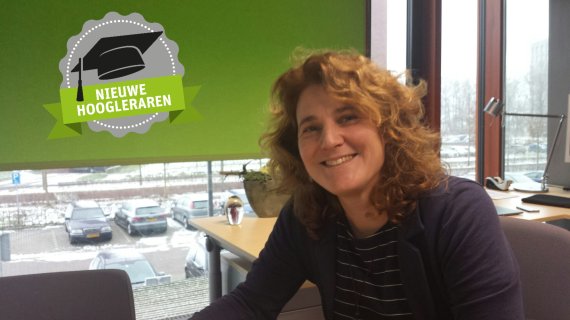Christa Testerink is pleased to be working in Wageningen. ‘I see plenty of new options for collaboration.’ © Albert Sikkema
Christa Testerink knows her predecessor in Wageningen well as Harro Bouwmeester left for the University of Amsterdam, where Testerink was professor of Plant Cell Biology, in February 2017. Now, after Bouwmeester’s move to Amsterdam, she is travelling in the opposite direction. ‘Amsterdam was a wonderful place too, but I’ve got far more opportunities in Wageningen,’ she says in her new office in Radix.
Postdocs
She is looking forward to working with the existing staff at Plant Physiology. In addition to the three PhD candidates coming with her from Amsterdam, she can also take on two postdocs and three PhD candidates next year. She has the money for that because one year ago Testerink secured a prestigious Consolidator Grant from the European Research Council (ERC). But she finds the embedding in Wageningen just as important. ‘I was already collaborating a lot with people like Ben Scheres and Eric Schranz and I knew a lot of Wageningen plant scientists from the Learning from Nature research programme. I see plenty of new options for collaboration. I feel very welcome here.’
Toxi
cTesterink is specialized in salt tolerance in plants. ‘When soils become saline, plants have problems taking up water, and the sodium in the salt is toxic for plants,’ she explains. ‘Plant roots are able to adapt to the salination. For example, they grow away from the areas with loads of salt in the soil and the root architecture is modified. The plant roots also have mechanisms for getting the sodium out of the plant cell. Some plants are better at that than others. I want to understand the mechanism, how plants control this.’ The EU gave her two million euros to answer that question.
Nearly all her research uses the thale cress, the model plant Arabidopsis thaliana, for which a lot of the genetic processes are known. In Wageningen, Testerink will extend her physiological research with plants that like saline conditions, but she is also looking forward to studying the roots of tomatoes and potatoes. ‘The big question is: how do plants detect salt in the soil? That question has been around for 50 years but it still hasn’t been answered.’ Testerink is not afraid to ask the big questions and has the ambition to find the answers with her new group in Wageningen.

